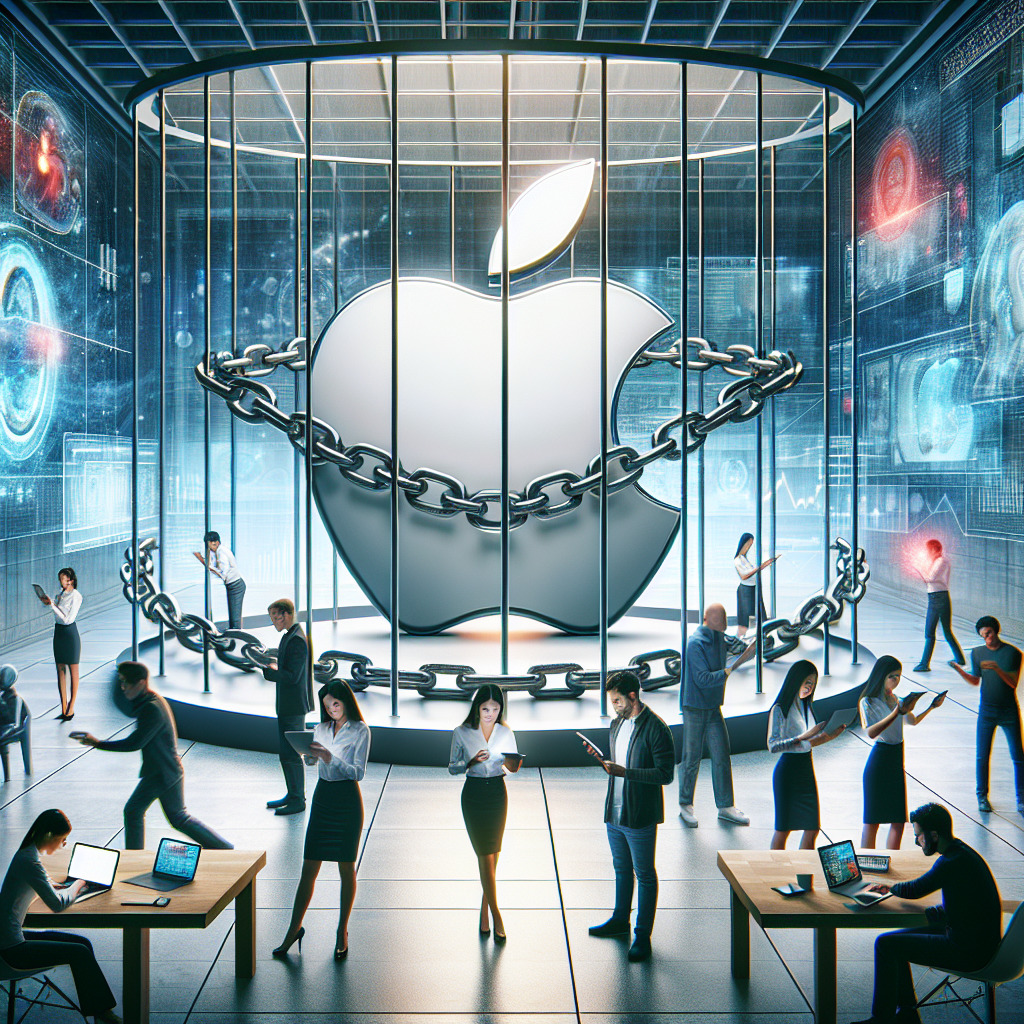Key Takeaways
Introduction
In recent months, Apple, a titan in the technology industry, has faced allegations regarding its employee communication policies. Traditionally known for its secrecy and tight information control, Apple’s current situation has captivated both legal and technological arenas. As this issue unfolds, it puts a spotlight on the delicate balance between maintaining confidentiality and fostering an open environment for employees.
Allegations and Concerns
The crux of the issue lies in Apple’s alleged “restrictive communication policies,” which some argue suppress employee freedom of speech and potentially dampen transparency within the company. Employees are reportedly discouraged from discussing certain topics on internal platforms, a policy that, per the allegations, extends to discussions on work conditions, company culture, and potentially controversial topics.
Balancing Confidentiality and Openness
Apple’s reputation for product innovation and market leadership is partly credited to its secretive culture. However, critics pose the critical question: Does imposing restrictions on employee communications do more harm than good? With employees feeling constrained, there’s a potential risk of stifled innovation and morale.
Reactions from the Industry
Industry experts and free speech advocates are keenly observing the developments at Apple. History demonstrates that other tech giants have faced similar scrutiny. Facebook and Google have had their policies challenged, prompting internal reviews and policy shifts. The outcome for Apple could influence broader policies across the tech industry, enhancing transparency and fostering open dialogues among employees.
The Legal Angle
From a legal perspective, Apple’s restrictive policies may intersect with employment laws designed to protect workers’ rights to discuss workplace issues freely. In particular, U.S. labor laws empower employees to discuss work-related issues without fear of retaliation—a principle which may be seen as being compromised by Apple’s current policies.
Governmental and Legal Scrutiny
The situation may invite increased scrutiny from bodies like the National Labor Relations Board (NLRB), which oversees such matters. Legal experts suggest that this scrutiny could spark a reevaluation of current practices, potentially prompting a shift toward more open policies.
Implications for Corporate Transparency
Transparency within corporations is increasingly becoming a priority in today’s business environment. Companies are recognizing that fostering transparent communication can enhance trust, employee satisfaction, and public perception. Apple, a leader in many respects, now faces the challenge of aligning its communication policies with modern transparency expectations.
Cultural Shift Potential
Depending on the reactions to these allegations, there is potential for a cultural shift within Apple. Such a shift could involve aligning with emerging norms in corporate governance, where employee voices are valued assets rather than potential liabilities. Ensuring employees feel heard and valued can uniquely position a company for future success, allowing space for diverse perspectives and innovation.
The Broader Picture
This issue extends beyond Apple, touching on broader debates regarding employee rights and corporate power dynamics in the modern workplace. As companies continue to navigate the balance between maintaining proprietary information and encouraging transparency, those that can integrate openness without compromising security may set the benchmark for the industry.
Best Practices for Employee Communication
Organizations looking to handle similar issues can consider implementing a few best practices:
– Establish clear guidelines that protect proprietary information without stifling open discussion.
– Foster a culture where employees feel safe to share opinions without fear of reprisal.
– Encourage employee participation in policy development, making them feel valued and engaged.
Conclusion
While Apple is known for navigating the thin line between innovation and secrecy, the current allegations surrounding restrictive employee communication are a significant test. As the company revisits its policies, it will need to align increased transparency with its historically guarded culture to maintain its standing as a leader in technology. This evolution is crucial not only for Apple’s internal growth but also as a case study for the entire industry. The coming months will reveal whether Apple can seamlessly blend these seemingly opposing forces.

